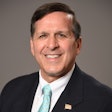
If a transgender patient walks into your office, do you know what questions to ask and not to ask? Do you have forms and facilities the patient would feel comfortable using? If you answered no, you're not alone. While many dentists want transgender patients to feel welcome, not everyone knows how to do so.
From the shows "Orange Is the New Black" to "Transparent," the media has been filled with transgender awareness stories. And while we don't know exactly how many transgender individuals there are, more youth in the U.K. are seeking treatment for gender dysphoria, according to the National Health Service, and it is estimated that between 0.25% and 1% of the U.S. population identifies as transgender, according to the National Center for Transgender Equality (NCTE). However, because many official surveys only allow respondents to identify as male or female, the statistics may be underestimated.
Transgender awareness is a pressing issue for the healthcare community. A 2011 transgender discrimination survey by the NCTE and the National Gay and Lesbian Task Force found that 50% of the 6,450 transgender and gender nonconforming respondents had to teach their medical providers about transgender care. Furthermore, 19% of respondents reported being refused care because of their transgender or nonconforming status, and 28% reported being harassed in medical settings.
The American Medical Association has guidelines and resources for lesbian-gay-bisexual-transgender-queer/questioning (LGBTQ) care. It also has specific recommendations for ensuring appropriate transgender care.
At press time, the American Dental Association (ADA) had not responded to requests for comment. However, ADA referred DrBicuspid.com to the ADA Principles of Ethics and Code of Professional Conduct, by which ADA members voluntarily agree to abide. Section four of the ADA Code outlines the principle of justice, or fairness. This principle expresses the concept that professionals have a duty to be fair in their dealings with patients, colleagues, and society. Under this principle, the dentist’s primary obligations include dealing with people justly and delivering dental care without prejudice.
Dentists may increasingly need to know how to create a welcoming practice for transgender patients. As the likelihood of treating a transgender person will increase as time goes on, it is prudent to learn the basics now -- not after a transgender person walks into your office.
5 ways to make your practice more welcoming
Experts from the University of California, San Francisco (UCSF) Center for Excellence for Transgender Health and the UCSF School of Dentistry have some information and tips to help dentists better care for their transgender patients.
1. Create intake forms that reflect diverse gender identities. What do your current intake forms list under gender? UCSF's suggested forms include multiple checkboxes, fill-in-the-blanks, and the option to decline to answer, so that every patient's identity can be reflected on the form.
 JoAnne Keatley, director, Center of Excellence for Transgender Health, University of California, San Francisco.
JoAnne Keatley, director, Center of Excellence for Transgender Health, University of California, San Francisco."We have standard intake form questions that we recommend," said JoAnne Keatley, director of the UCSF Center for Excellence for Transgender Health, in an interview with DrBicuspid.com. "We recommend the two-step model, which is the ability to self-identify, and then a follow-up question to sex assigned at birth."
These forms allow dentists to get a better understanding of their patient and will also indicate that the practice is welcoming to all individuals, according to Gwen Essex, RDH, EdD, a professor of preventive and restorative dental sciences at the UCSF School of Dentistry.
"It's not just that they're welcome, but it could be early signs to the patients that this is an effort to include [them] in their practice," Dr. Essex said in an interview with DrBicuspid.com.
2. Ensure your practice has gender-fluid facilities. If your practice has restrooms designated specifically as male and female, it can create an uncomfortable experience for transgender or genderqueer patients. Experts suggest instead making restrooms unisex or all-gender, so that all patients feel comfortable. It is also helpful to decorate with gender-neutral colors.
"Any public setting, any medical building that transpeople are going to be accessing services at, there should be facilities that are amenable for their usage," Keatley said. "In other words, if there is a single-stall bathroom in the facility, it would be useful to designate it as an all-gender bathroom, as opposed to having male or female."
3. Ask patients how they want to be addressed in person and on medical forms. When asked, transgender patients will tell you what name and pronoun they prefer. Not everyone wants to be referred to by their legal name or as he or she. For example, a patient may preferred to be known as they, ze, or zir.
 Gwen Essex, RDH, EdD, professor of preventive and restorative dental sciences, University of California, San Francisco School of Dentistry.
Gwen Essex, RDH, EdD, professor of preventive and restorative dental sciences, University of California, San Francisco School of Dentistry.It is crucial to note that some people may need a legal name on certain forms that differs from their preferred name within the practice. This often comes up with dental insurance cards, according to Keatley.
"Often, the insurance will reflect their legal name or the name they are employed under and that may or may not be reflective of their lived identify," she said.
Any specifics regarding differences between legal and lived names can be documented on a patient's forms and referred to at each visit.
"Make sure you're putting that on your forms," Essex noted. "Know when to say we're billing William, but we're speaking to Sharon."
All staff should be aware and respectful of a preferred name and pronoun. They should also be aware of offensive questions and phrases.
"I think people accidently ask really offensive things without recognizing," Essex explained. "For example, asking, 'What was your real name?' "
The Center for Excellence for Transgender Health also recommends that healthcare professionals do not refer to a transgender patient as a "tranny," because the term can be derogatory.
4. Respectfully find out if patients are taking hormones. It can be considered impolite to ask whether patients are taking hormones, but it is something that dentists should ask about, because hormone treatments affects oral health.
"I think that is perhaps a very sensitive, triggering question for some people," Essex explained.
Dentists document when a woman going through menopause takes hormones, she noted, and they need to know when a transgender patient is taking any sort of hormone medication as well. Hormones can affect tissues, and this can lead to increased bleeding and a risk for periodontitis, but transgender patients likely do not know this.
"If an individual didn't understand that hormones have an impact on oral health, compassionately say the explanation of the relationship between oral health and systemic health," Essex said. "It's also important that everyone on the team has the skills to compassionately care and ask these questions without raising suspicion or concern."
One way to address this is to ask all patients to list their medicines, including hormones, on intake forms and have patients update their forms at each visit. Note, however, that not all transgender patients take hormones. Don't assume that just because someone identifies as transgender that they are taking hormones and trust that their medication list is complete.
5. Use words and imagery that are reflective of a welcoming environment. One of the best ways to show you welcome all patients is by choosing art and text that reflect all walks of life.
"The other thing dentists certainly can do is to have imagery that represents diversity and acceptance and welcoming of diverse populations," Keatley said. "It's not to say that the dentist's office is to reflect trans imagery exclusively, but it wouldn't hurt to have imagery ... and language posted on the wall that makes it clear that the facility is welcoming to all forms of the human experience."



















